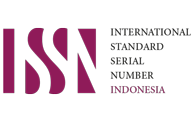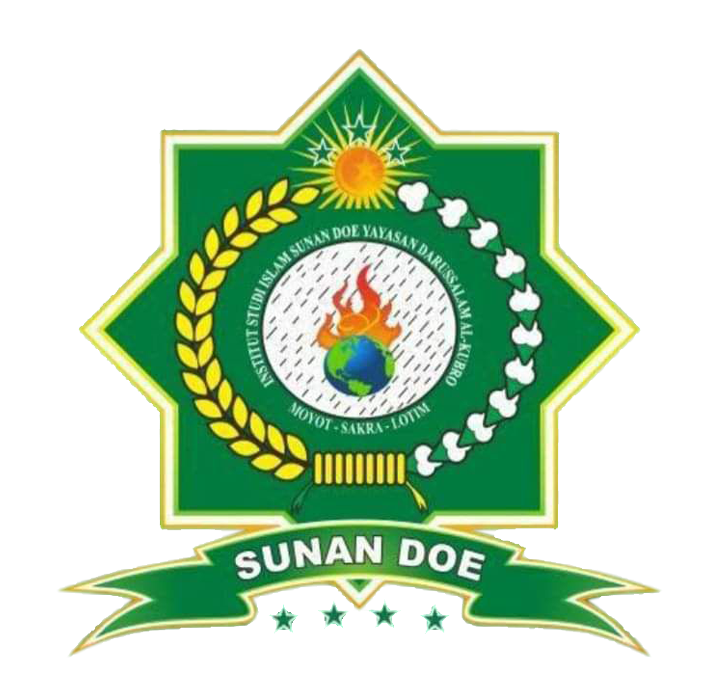Identifying Students’ Perceptions on YouTube as Online Media in English for MICE
Keywords:
Online learning, YouTube, MICE, online media, english for MICEAbstract
Online learning has been one of crucial topic in the Covid-19 pandemic era. This paper aims to describe the student's perception on the use of YouTube application as online learning media. This research used a descriptive qualitative approach by using survey and discussion. The class of this study was twenty-three students. The questionnaire was analyzed by using Likert-Scale and the interview was analyzed qualitatively. The interview script presented to get students statements about their perceptions of English for MICE online learning via YouTube, whether in positive or negative. The result of this research displays that using YouTube as English for MICE’s online learning media gives many positive effects to the student’s English mastery, such as vocabularies, practices and also increased of their English four skills. Though, frequently pupils had anxiety around deficiencies of internet joining, but this problem perceptibly resolved thriving by them.
References
Abdullah, D., Sastraatmadja, A. H. M., Lestari, N. C., Saputra, N., & Haddar, G. Al. (2023). Implementation of youtube as a learning media in the new normal era. Cendekia: Media Jurnal Ilmiah Pendidikan, 13(3), 476–481.
Adisti, A. R. (2022). Investigating the use of YouTube as virtual teaching medium in ELT among non-English students. Journal of English Language Teaching, 6(1), 1–9. http://journal.unnes.ac.id/sju/index.php/elt
Anugerah, R., Yuliana, Y. G. S., & Riyanti, D. (2019). The Potential of English Learning Videos in Form of Vlog on Youtube for ELT Material Writers. Proceedings International Conference on Teaching and Education (ICoTE), 2(2), 224–229.
Aprianto, D. (2020). To What Extent Does YouTube Contents-Based Language Learning Promote an English Proficiency? Journal of English Language Teaching and Literature, 3(2), 108–126.
Cahyana, A. A. C. (2020). The Use of YouTube Video in Teaching English for Foreign Language at Vocational High School. JPBII, 8(2), 1–1.
Dabamona, M., & Yunus, A. (2021). The Use of Youtube for Learning English: Exploring Technology-Based Approach. INTERFERENCE: Journal of Language, Literature, and Linguistics, 3(1), 68–89.
Fitriyani, Y., Rasdawita, & D., Y. (2023). Youtube as a learning media for writing narrative text at SMP Muhammadiyah 1 Jambi. Jurnal Disastri: Pendidikan Bahasa Dan Sastra Indonesia, 5(2), 202–207. http://ejournal.unhasy.ac.id/index.php/disastri
Ikhlasa, T. N., & Suryadi. (2022). The Effect of Vlog Content YouTube Media on Learning English. IJIET (International Journal of Indonesian Education and Teaching), 7(1), 33–40. https://doi.org/10.24071/ijiet.v7i1.5315
Jailani, A. (2022). The Use of YouTube Videos in English Language Teaching: A Perspective of Indonesian Undergraduate Students Majoring in English Language Education. J-SHMIC: Journal of English for Academic, 9(2), 13–24. https://journal.uir.ac.id/index.php/jshmic
Lestari, P., Rohliah, L., Ningsih, W., & Hutagalung, G. U. (2023). Youtube: A Teaching Media to Optimize Students’ English Listening Comprehension Skill. Global Expert: Jurnal Bahasa Dan Sastra, 11(1), 17–24.
Nasution, A. K. R. (2019). YouTube as a Media in English Language Teaching (ELT) Context: Teaching Procedure Text. UTAMAX: Journal of Ultimate Research and Trends in Education, 1(1), 29–33. http://ojs.journal.unilak.ac.id/index.php/utamax
Nofrika, I. (2019). EFL Students’ Voices: The Role of YouTube in Developing English Competencies. Journal of Foreign Languange Teaching and Learning, 4(1), 56–73. https://doi.org/10.18196/ftl.4138
Nuriyah, Z. C., Anggraini, A., Yusal, Y., Sa’id, I. Bin, Maiyanti, A. A., & Wulandari, R. W. (2023). Digital Technology Development in the Form of YouTube Videos as Science Learning Media in Ecosystem Material on Learning Motivation. Ijomer (Indonesian Journal of Multidisciplinary Educational Research), 1(1), 14–28. https://doi.org/10.30762/ijomer.v1i1.900
Nurmala Sari, Y. (2019). YouTube as a Learning Media to Improve the Student’s Speaking Ability in 21st Century. JELTL (Journal of English Language Teaching and Linguistics), 4(2), 2503–1848. www.jeltl.org
Putra, D. M., & Suharto, R. P. (2022). Pembuatan Vlog Bisnis oleh Mahasiswa Bahasa Inggris sebagai Model Pembelajaran Online Mata Kuliah Speaking. Jurnal Terapan Pendidikan Dasar Dan Menengah, 2(4), 712–719.
Putri, F. H. (2019). YouTube for Self-Regulated Language Learning: An EFL Perspective. English Education: Jurnal Tadris Bahasa Inggris, 12(2), 42–57. https://ejournal.radenintan.ac.id/index.php/ENGEDU
Qamariah, I., Muchtar, Y. C., & Fadli. (2019). Service Quality of Mice (Meeting, Incentive, Conference and Exhibition) Industry. International Conference of Organizational Innovation, 614–618.
Smagina, N. (2017). The internationalization of the Meetings-, Incentives-,Conventions- and Exhibitions- (MICE) industry: Its influences on the actors in the tourism business activity. Journal of Economics and Management, 27(1), 96–113. https://doi.org/10.22367/jem.2017.27.06
Suharto, R. P. (2022). Persepsi Mahasiswa Bahasa Inggris terhadap Penggunaan YouTube sebagai Media Pembelajaran Online Matakuliah English for MICE. Jurnal Terapan Pendidikan Dasar Dan Menengah, 2(4), 704–711.
Tahmina, T. (2023). Students’ Perception of the Use of YouTube in English Language Learning. JOLLT Journal of Languages and Language Teaching, 11(1), 151–159. https://doi.org/10.33394/jollt.v%vi%i.6883
Wahyuningsih, S., & Ni’mah, I. S. (2023). Building Self-Confidence in English Public Speaking through YouTube? Why Not? Scope : Journal of English Language Teaching, 7(2), 287–291. https://doi.org/10.30998/scope.v7i2.16198
Widiantari, I. A. P. A., Dwi, N. L. P. E. S., & Artini, L. P. (2023). YouTube as an Alternative Learning Media for Independent Bilingual Young Learners: A Review. JET: Journal of English Teaching, 9(1), 83–97. https://doi.org/10.33541/jet.v9i1.4611
Zubaidi, Suharto, R. P., & Rahayu, E. L. (2021). Improving Students’ Speaking Skill through Students Vlog Project as PBL Output on Online Speaking Class. BRILIANT: Jurnal Riset Dan Konseptual, 6(4), 764–774. https://doi.org/10.28926/briliant
Downloads
Published
Issue
Section
License
Copyright (c) 2023 Ririn Pratiwi Suharto (Author)

This work is licensed under a Creative Commons Attribution-ShareAlike 4.0 International License.
Asshika: Journal of English Language Teaching and Learning y Saniya Institute is licensed under Creative Commons Attribution ShareAlike 4.0
It means that:
- Adapted Material means material subject to Copyright and Similar Rights that is derived from or based upon the Licensed Material and in which the Licensed Material is translated, altered, arranged, transformed, or otherwise modified in a manner requiring permission under the Copyright and Similar Rights held by the Licensor. For purposes of this Public License, where the Licensed Material is a musical work, performance, or sound recording, Adapted Material is always produced where the Licensed Material is synched in timed relation with a moving image.
- Adapter's License means the license You apply to Your Copyright and Similar Rights in Your contributions to Adapted Material in accordance with the terms and conditions of this Public License.
- BY-SA Compatible License means a license listed at creativecommons.org/compatiblelicenses , approved by Creative Commons as essentially the equivalent of this Public License.
- Copyright and Similar Rights means copyright and/or similar rights closely related to copyright including, without limitation, performance, broadcast, sound recording, and Sui Generis Database Rights, without regard to how the rights are labeled or categorized. For purposes of this Public License, the rights specified in Section 2(b)(1)-(2) are not Copyright and Similar Rights.
- Effective Technological Measures means those measures that, in the absence of proper authority, may not be circumvented under laws fulfilling obligations under Article 11 of the WIPO Copyright Treaty adopted on December 20, 1996, and/or similar international agreements.
- Exceptions and Limitations means fair use, fair dealing, and/or any other exception or limitation to Copyright and Similar Rights that applies to Your use of the Licensed Material.
- License Elements means the license attributes listed in the name of a Creative Commons Public License. The License Elements of this Public License are Attribution and ShareAlike.
- Licensed Material means the artistic or literary work, database, or other material to which the Licensor applied this Public License.
- Licensed Rights means the rights granted to You subject to the terms and conditions of this Public License, which are limited to all Copyright and Similar Rights that apply to Your use of the Licensed Material and that the Licensor has authority to license.
- Licensor means the individual(s) or entity(ies) granting rights under this Public License.
- Sui Generis Database Rights means rights other than copyright resulting from Directive 96/9/EC of the European Parliament and of the Council of 11 March 1996 on the legal protection of databases, as amended and/or succeeded, as well as other essentially equivalent rights anywhere in the world.
- You means the individual or entity exercising the Licensed Rights under this Public License. Your has a corresponding meaning.

















